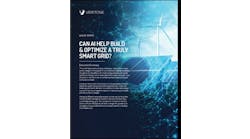A new law opens the door for more fuel cell projects in Connecticut, with the state placing value on their ability to enhance electric reliability and resiliency.
A hub of U.S. fuel cell manufacturing, the state already has several fuel cell microgrids, including projects for the town of Woodbridge, University of Bridgeport, and Hartford’s Parkville neighborhood. The state also is home to utility-scale fuel cell projects.
More fuel cells are likely to be installed now with the enactment of Public Act 17-144 – An Act Promoting the use of Fuel Cells for Electric Distribution System Benefits and Reliability, approved last month by the Legislature and signed into law by Gov. Dannel Malloy.
The law promotes fuel cell use in two ways.
First, it allows utilities to create plans for up to 30 MW of fuel cell projects. Utilities must show how the fuel cells can improve the reliability of the distribution grid. For example, a project may avert the need for the utility to undertake capacity upgrades or improve voltage, frequency or other aspects of grid functioning.
Utilities would have the option of building and owning the fuel cells on their own or operating them under third-party power purchase agreements. The law also says the utilities may propose incentives for fuel cell projects that specifically include combined heat and power.
Second, the new law calls on the Connecticut Department of Energy and Environmental Protection to issue a solicitation for clean energy that enhances reliability and resiliency — two attributes of fuel cells.
Winning projects also must promote in-state economic development. Given the presence of fuel cell manufacturing in the state, fuel cell projects would be well-positioned to demonstrate that they can help the local economy.
“In-state fuel cell projects generate significant tax revenue for municipalities via property tax and for the state through sales tax on fuel cells and payroll taxes from manufacturing and service plus the follow-on benefits associated with the extensive fuel cell supply chain that resides in the state,” said Chip Bottone, president and CEO of Connecticut-based FuelCell Energy.
Utilities will be allowed to recover fuel cell project costs pending review by the Public Utilities Regulatory Authority.
To learn more about microgrid fuel cell projects download our free whitepaper: “Fuel Cell Microgrids: The Path to Lower Cost, Higher Reliability Cleaner Energy.”






